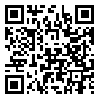Volume 59, Issue 1 (7 2001)
Tehran Univ Med J 2001, 59(1): 59-63 |
Back to browse issues page
Download citation:
BibTeX | RIS | EndNote | Medlars | ProCite | Reference Manager | RefWorks
Send citation to:



BibTeX | RIS | EndNote | Medlars | ProCite | Reference Manager | RefWorks
Send citation to:
Akbari Asbagh F. Prevention of ovarian hyperstimulation syndrome in patients with polycystic ovarian syndrome by using midfollicular FSH/LH ratio and counting number(s) of ovarian follicles. Tehran Univ Med J 2001; 59 (1) :59-63
URL: http://tumj.tums.ac.ir/article-1-1355-en.html
URL: http://tumj.tums.ac.ir/article-1-1355-en.html
Abstract: (10936 Views)
The objective of this study was to examine the correlation between both midfollicular FSH/LH ratio and number(s) of follicles with ovarian hyperstimulation syndrome (OHSS) in patients with polycystic ovarian syndrome (PCOS). This was carried out in IVF unit at Mirza Kouchak Khan Hospital. To induce ovulation, PCOS patients were stimulated with gonadotropines. Fifty four PCOS patients with normal basal level of FSH, LH were studied prospectively. 22 patients did not receive HCG and stimulation cycle was canceled due to OHSS. 32 patients received HCG and stimulation cycle was completed. In all patients mid-follicular (day 8 of stimulation protocol) serum FSH/LH ratio was measured. On the same day number of ovarian follicles were also counted using vaginal sonography. In canceled cycles, LH on day 8 was shown to be low along with increased number of follicles. The risk of cycle cancelation raised twice with one increment of FSH/LH ratio. Also, with increase of one follicle the risk of cycle cancellation increased 1.3 times. To induce ovulation by gonadotropine stimulation in PCOS patients, the dose should be carefully monitored. Measuring FSH/LH ratio and number of follicles on day 8 of stimulation protocol are reliable guides in order to predict those patients prone to develop OHSS.
Keywords: Ovarian hyperstimulation syndrom, Polycystic ovarian syndrom, Ovarian follicles, FSH/RH ratio
| Rights and permissions | |
 |
This work is licensed under a Creative Commons Attribution-NonCommercial 4.0 International License. |





